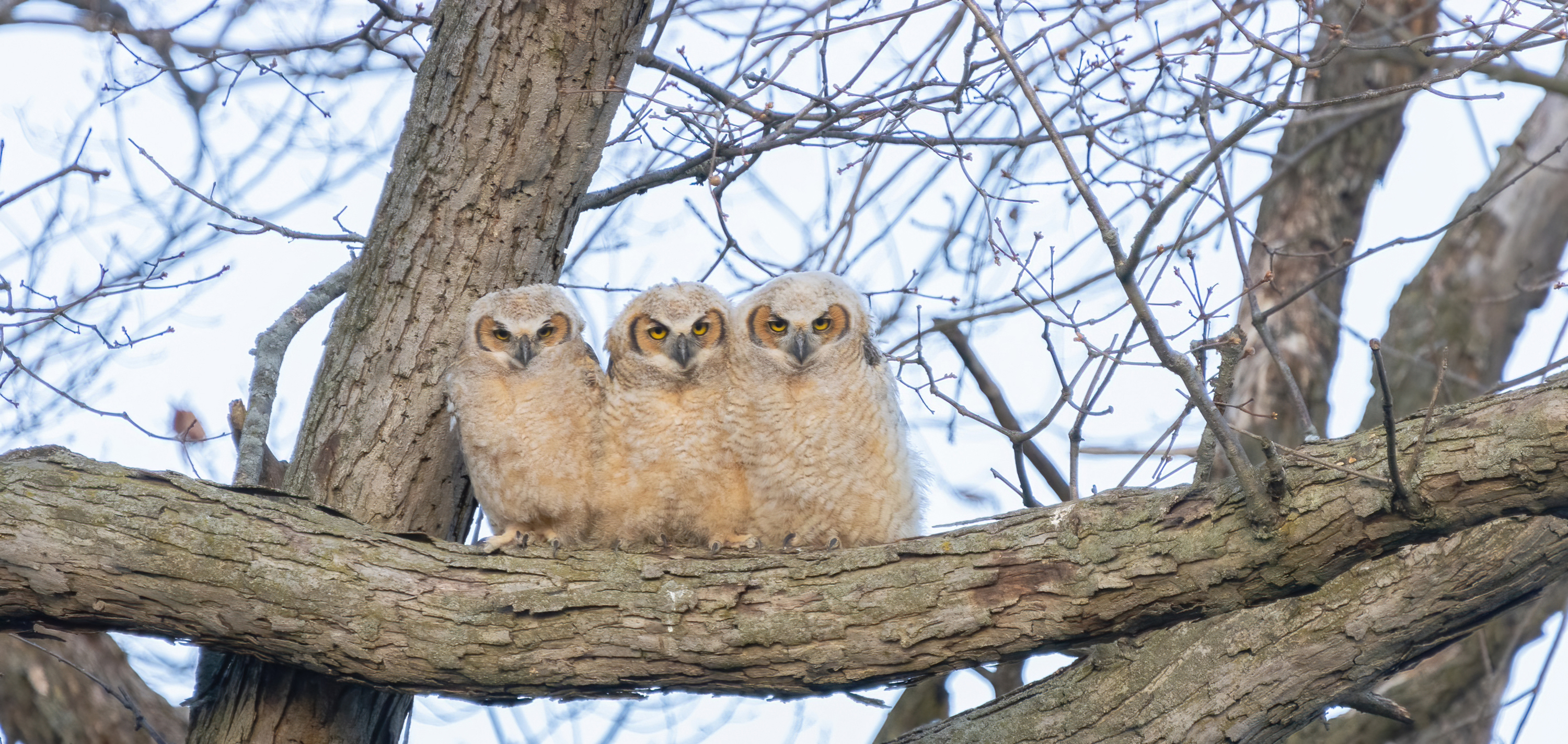Woodland Dunes Nature Center has, since its inception in the early 1970’s, coordinated four separate Christmas Bird Counts in Manitowoc County and submitted all results to WSO. During that time the core group of counters, notably Bernie Brouchoud, John Woodcock, and Charles Sontag have faithfully counted each year throughout the period, joined more than 20 years ago by members of the Aegolius Bird Club. The CBCs provided an opportunity to “bird with a purpose” for a couple of weekends, visiting sites which in many cases were not surveyed other times of the year.
For many years, a pot-luck followed the last of the counts, allowing birders the chance to visit and share tall tales of a feathered kind. As in many cases involving organized groups, we noticed the ageing demographics of our birders. Their experience is invaluable, but we thought it would be good to incorporate a more youthful component to this interesting and meaningful citizen-science activity. We also wished to facilitate connections between children and birding mentors. We feel such relationships are incredibly important not only toward learning about birds, but also developing an ethical mindset that includes an effective and positive stewardship of nature.
Kelly Vorron, our education coordinator, in researching methods to engage children in nature study, found that there was an effort to promote Christmas Bird Counts for Kids in California, started by Sonoma Birding, a citizen-science based conservation organization in Sonoma, CA. Kelly contacted their staff, and they were more than willing to share their methods and experience about their CBC for Kids.
On December 28 of last year, we conducted our first kid’s CBC. We scheduled the Two Rivers count for that day, the circle for which includes Woodland Dunes. Preregistration was requested, and based on registrations three seasoned birders – Bernie Brouchoud, Charles Sontag, and Jim Knickelbine – were recruited to help. Families arrived at 9 am on the count day, and children were separated by age into groups. Young children were treated to activities designed by Kelly to appropriately engage them – a craft project, a birding game, and a walk around the yard including the opportunity to lay down on a blanket beneath the bird feeders and watch the chickadees come to feed.
The older children were also divided so that several of them worked with one of the experienced birders. First they talked about very basic bird anatomy and shape, the use of field marks, the use of binoculars, and the custom field data sheet that had been developed specifically for the event, which included a basic list of birds most likely to be seen. The children were given binoculars, and used them to read signs that Kelly had placed at known distances from the windows, on which were printed riddles.
Then the adults and their charges (and some parents and grandparents) went out into the field in areas close to the center headquarters including several different habitats. Children were encouraged to find and identify birds themselves, with guidance as necessary provided by the adult birders.
Extra feeders had been placed at points along trails to improve the chances of seeing birds. The children also recorded the required metadata (effort, weather) associated with the CBC.
After an hour or so, groups returned to the nature center and entered results from their field checklists into a spreadsheet developed for the activity. After discussing their results among themselves, members of the different groups presented their results to everyone present, followed by lunch. Our staff and volunteers very much enjoyed this activity. Although the turnout was not high, a little more than a dozen children plus parents, those who attended were motivated and interested in learning about birds, and the small group sizes provided an opportunity for extensive interaction between old and young birders. As is common in environmental education, we don’t have resources to track the participants to see if this activity results in a long term interest in birds and bird conservation, but at the very least it was a very positive multigenerational experience that incorporated exposure to birds and the natural world. Some of the families participating are involved in home- schooling, and they have gone on as a result to form a monthly children¹s birding group, which visits the nature center year round for a bird activity and bird walk. Up to about 30 children and parents have attended these activities. We intend to continue the CBC for Kids, and look forward to additional activities through which we can engage our young birders and foster a greater appreciation for nature.
Jim Knickelbine
Executive Director Woodland Dunes Nature Center and Preserve
Editor’s Note: For more information on how to organize your own Christmas Bird Count for Kids, please visit the WSO website.
